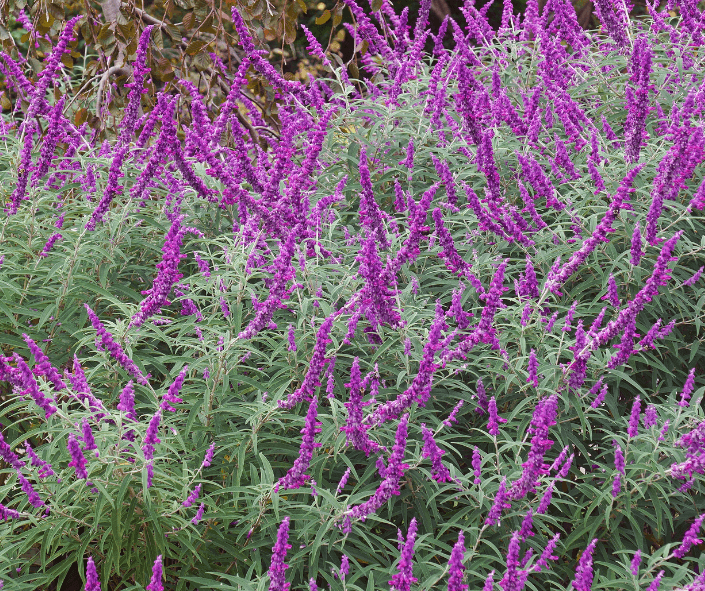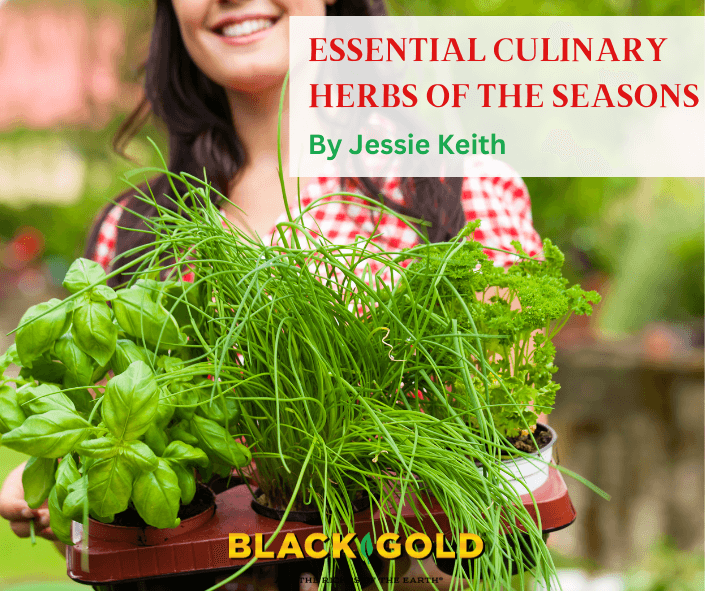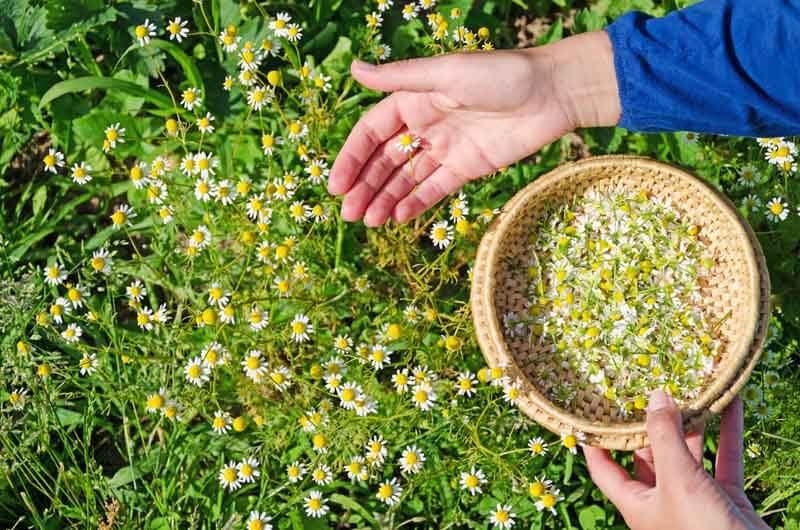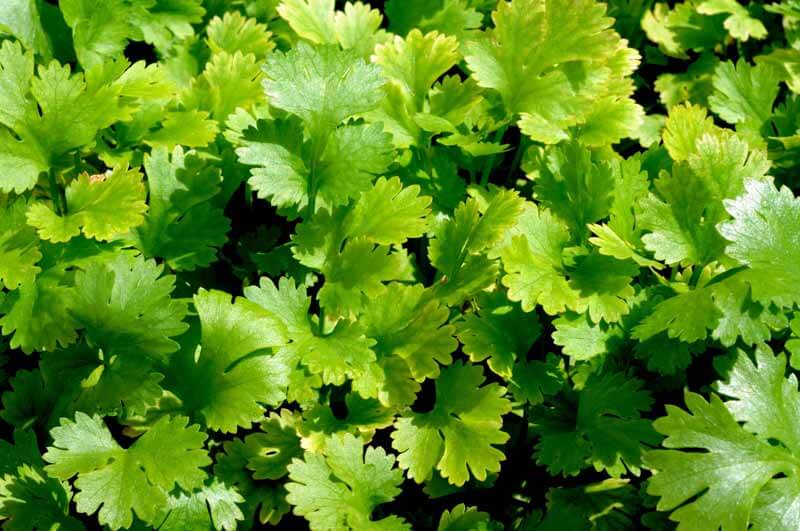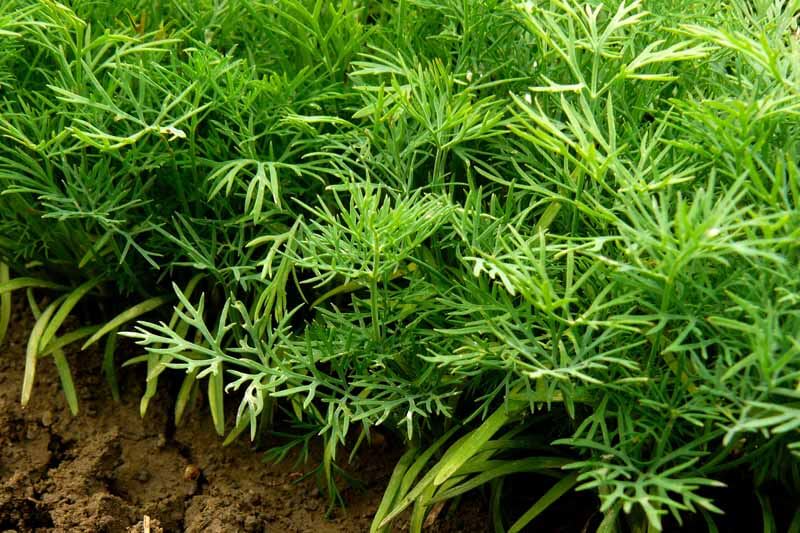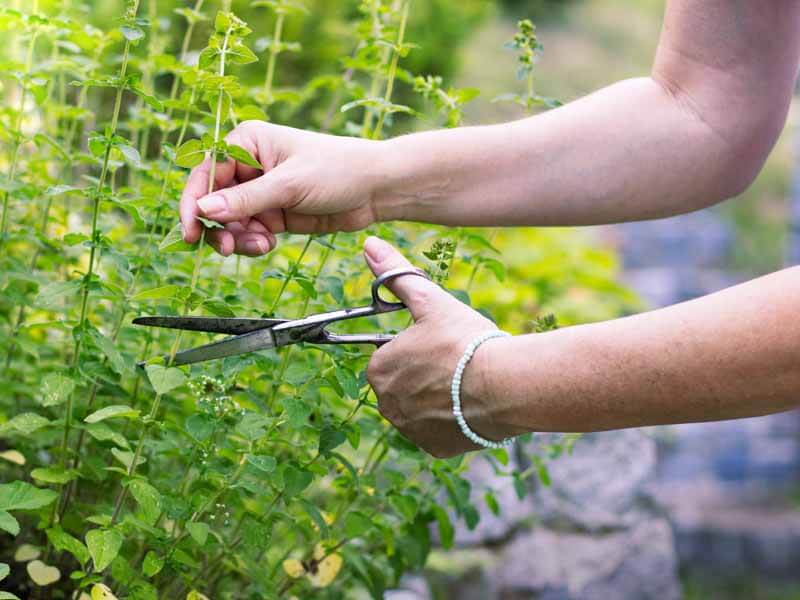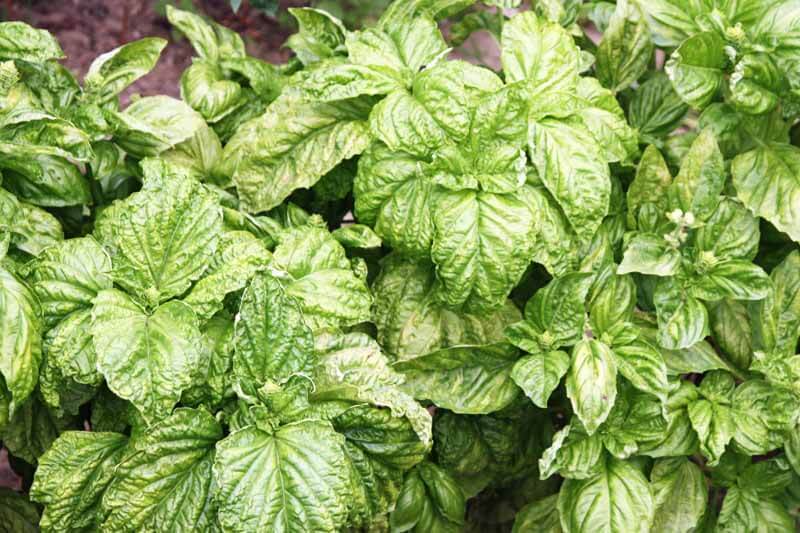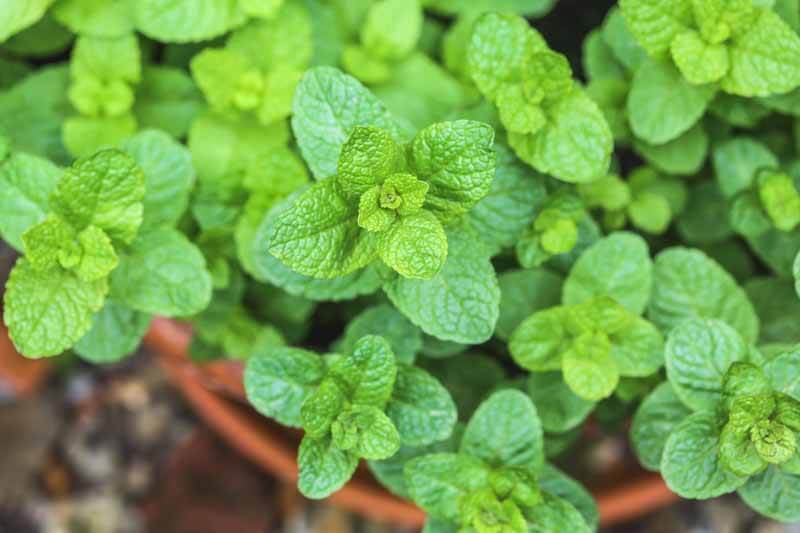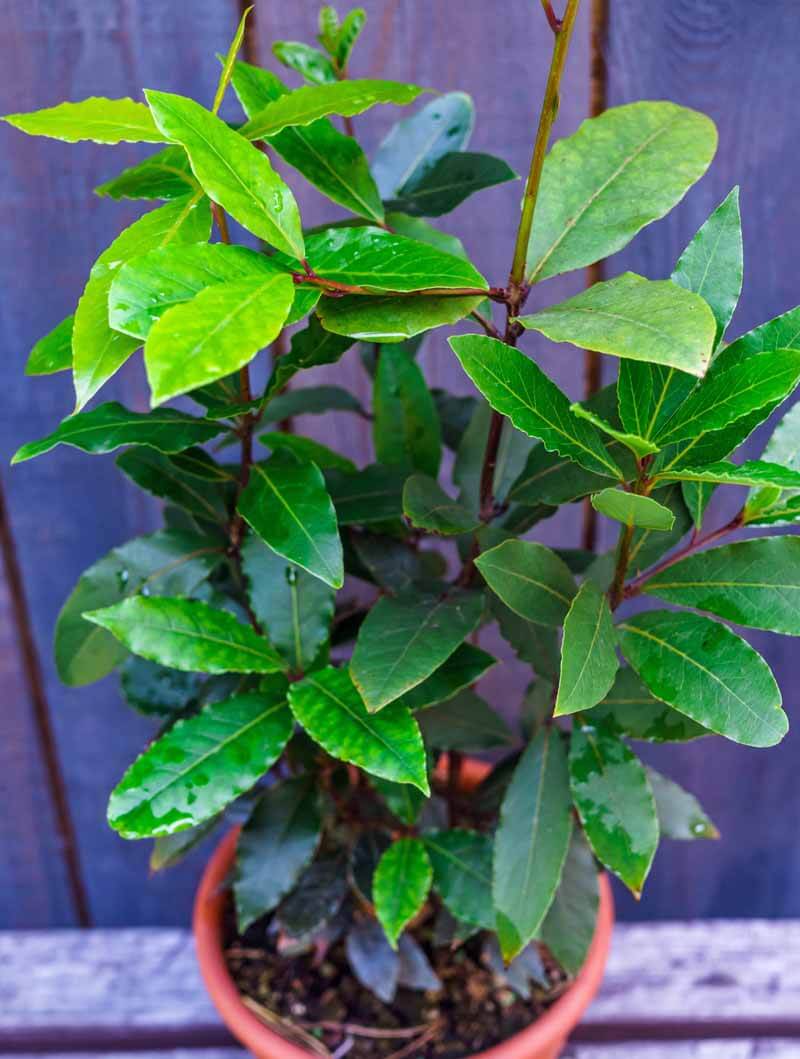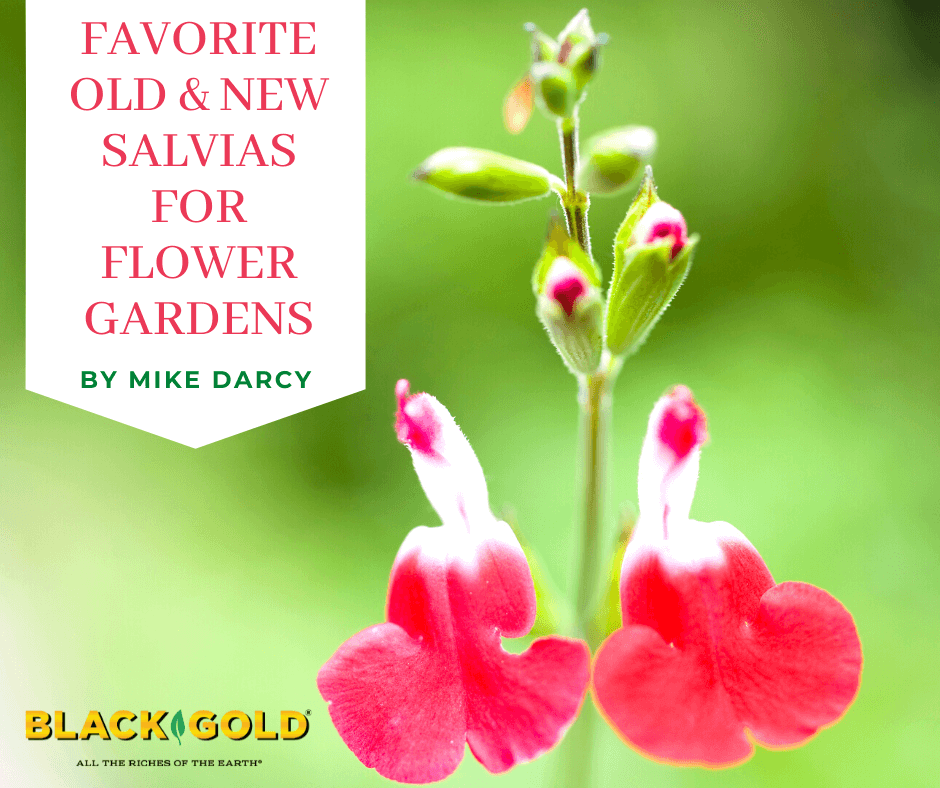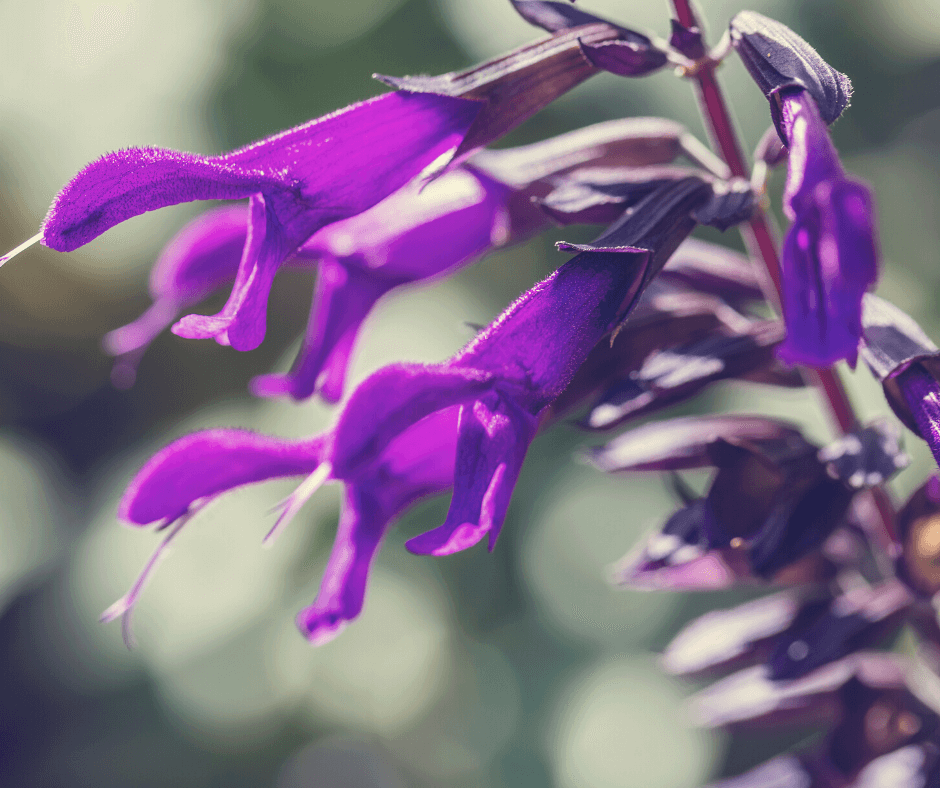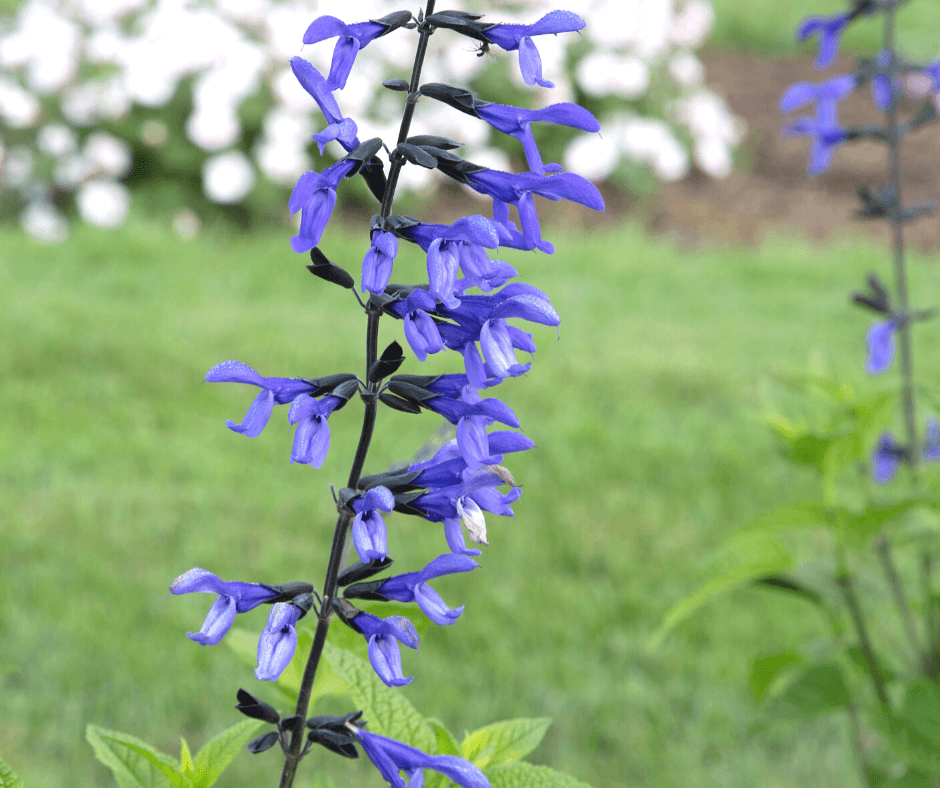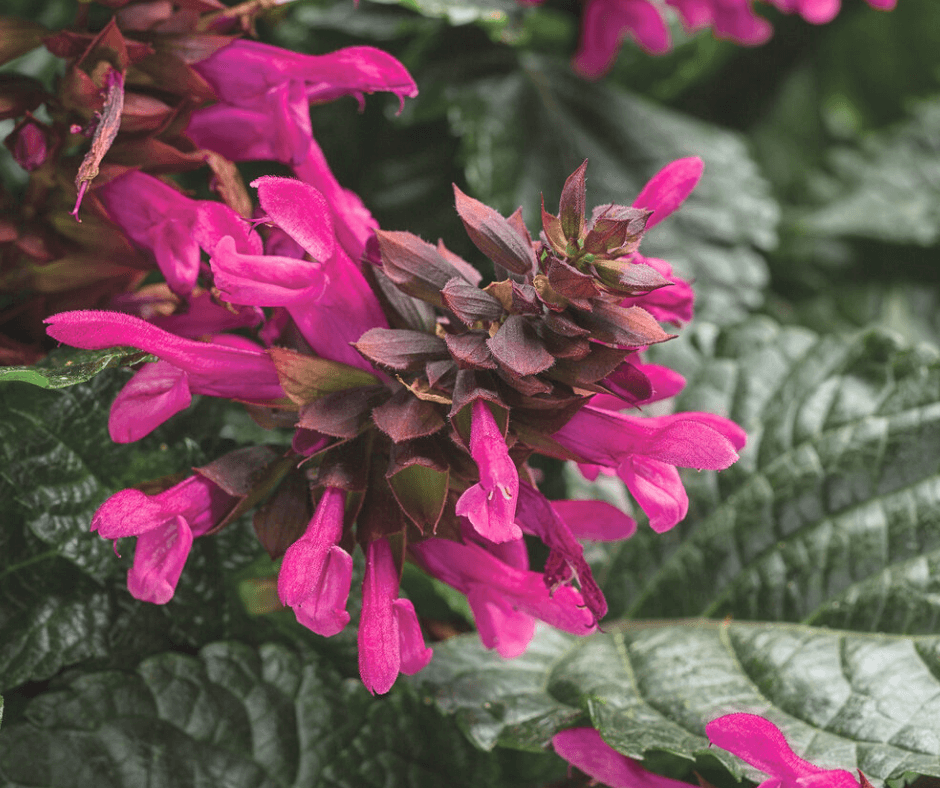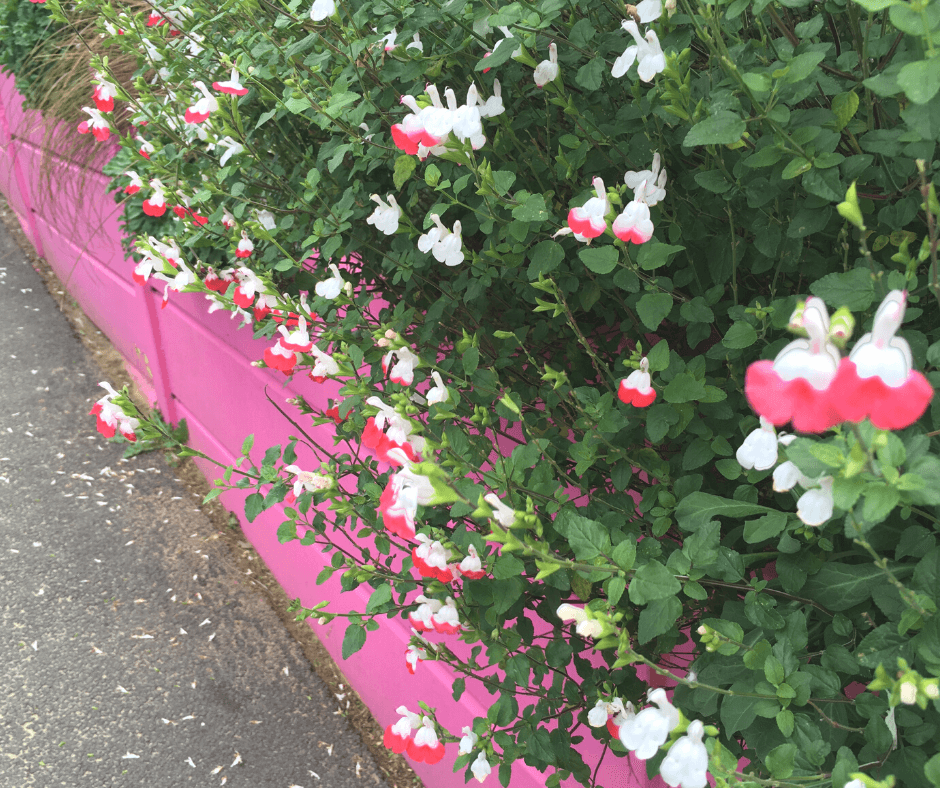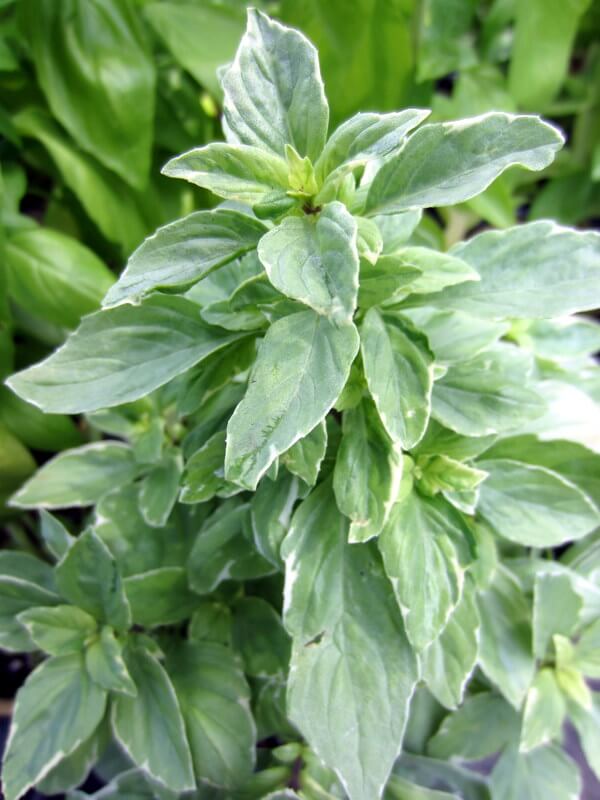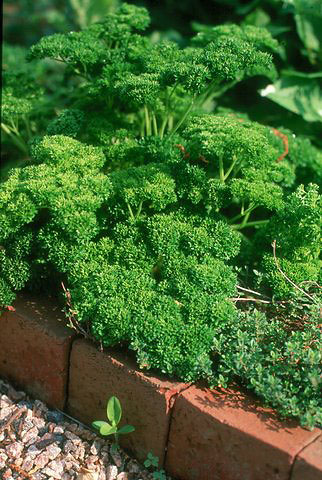
Parsley, Sage, Rosemary, and Thyme is one of the most popular songs by Simon and Garfunkel, and both the herbs and song are favorites. But, what about basil? Shouldn’t basil be a part of the song lyrics? Truly, the addition of basil would create a wordier line in the song, but the addition of the herb would complete my list of top herbs to grow in summer. (We will leave parsley out because most gardeners start the plant as a spring herb.)
Basil
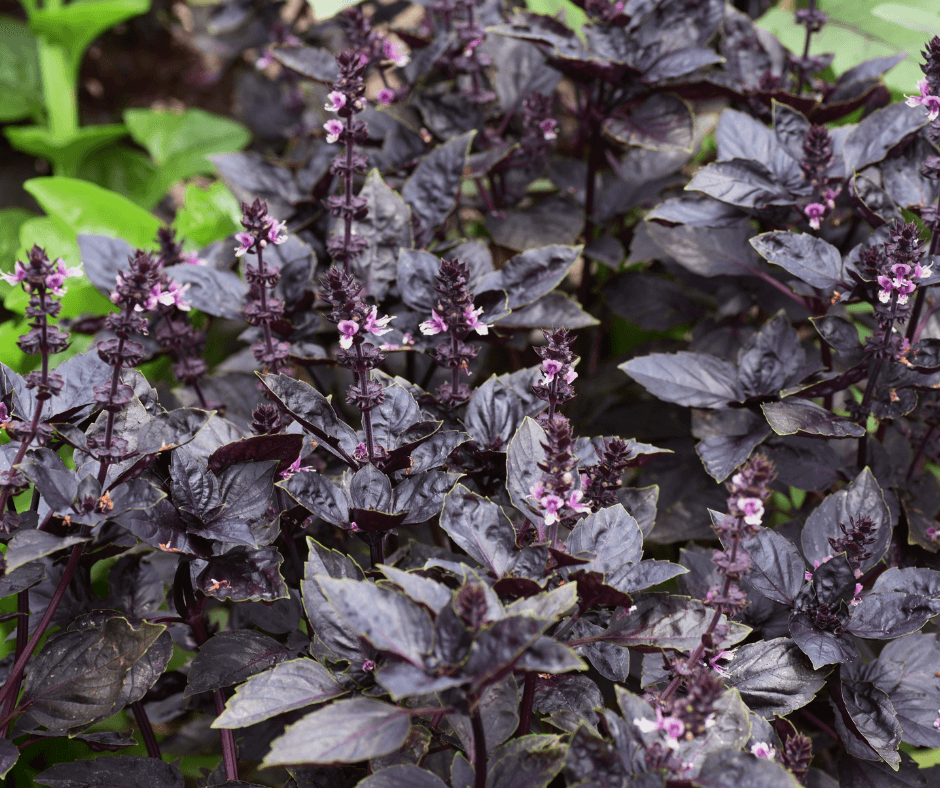
Basil (Ocimum basilicum) is one of the most important culinary summer herbs, and the plant is steeped in history and folklore. It is probably the most well-known and widely grown of all the summer herbs. Although ubiquitous to southern European cuisine, basil is a native of Africa, Asia, and parts of the Middle East. The word itself, basil, is believed to be derived from the Greek Basilikon phuton which means “kingly herb.”
In my summer garden, I would never be without a container or two of basil. There are many different cultivars–too many to list. Basil flavors range from sweet basil, such as ‘Genova’ or ‘Lettuce Leaf’, to the anise-scented leaves of Thai basil (Ocimum basilicum var. thyrsiflora, ‘Siam Queen‘ is a beautiful flowering form), or the lemony leaves of ‘Mrs. Burns’ ‘Lemon basil (Ocimum basilicum var. citriodora ‘Mrs. Burns). There are also colorful purple and red basils, such as ‘Dark Purple Opal‘ or the maroon ‘Osmin‘, etc.
While I always try a new variety each year. Last summer, I grew ‘Emerald Towers’ for the first time. It grew, as the name implies, in more of a pyramid shape, and, as advertised, the plant produced no flowers. The leaves had the same flavor as sweet basil. It was so effortless, I plan to grow one in a pot near the kitchen door for summer!
Basil plants will bloom with spikes of white or lavender flowers, but I recommend gardeners pinch the flowers off, so the plant will continue to produce new leaves rather than seeds. Sometimes, in the fall I leave a few flower spikes when plants are tired because they seem to be a magnet for honeybees.
Sage

Sage (Salvia officinalis) is another easy-to-grow summer herb originating from the Mediterranean. In our Pacific Northwest climate, the shrubby, evergreen will overwinter as a perennial (USDA Hardiness Zones 5-11). The attractive plants look good either in ornamental gardens or herb gardens.
There are quite a few garden-worthy culinary sage varieties with variations in leaf color from standard green to purple to variegated forms, which usually have leaves with purple tones and white margins. The large-leaved ‘Berggarten‘ sage has big, rounded, felty-green leaves, and the purple, ivory, and green-leaved ‘Tricolor‘ sage is both good-looking and savory. In the spring or early summer, the sage plants produce spikes of lavender-blue flowers visited by bees.
Any sage can be grown as an attractive potted plant, if given full sun a large pot filled with quality, well-drained soil and regular water.
Rosemary
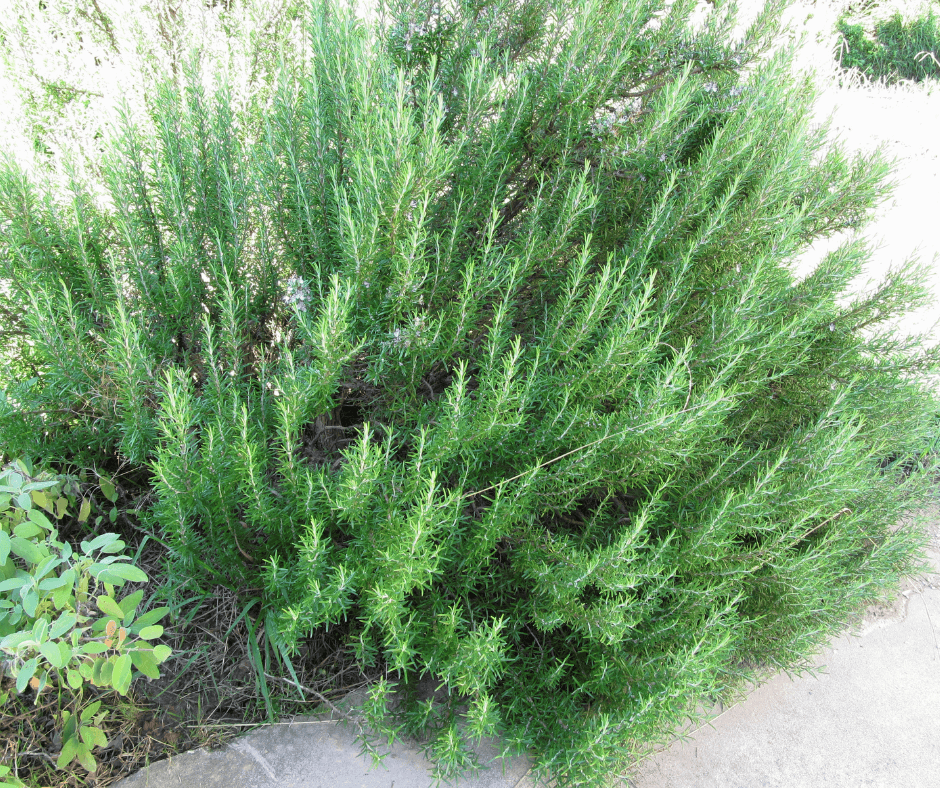
Another shrubby perennial herb is rosemary (Rosmarinus officinalis, USDA Hardiness Zones 7-11). While many plants did not survive our January ice storm last winter, rosemary plants usually live through our winters. Fortunately, some cultivated varieties are hardier than others. ‘Arp‘ is a selection that tends to be more winter-hardy than others and can survive winters up to Zone 6.
Rosemary grows to be a large, attractive plant in the garden. Specimens can reach 3-feet or more. In fact, they are often grown as shrubs in the Mediterranean. For their best chance of survival, choose a full-sun location with sharply-drained soil. The roots will not tolerate wet feet in the winter.
Small spikes of flowers appear along the stems in various shades of lavender-blue, sometimes white, in the late spring or early summer. There are trailing forms that are ideal for planting along a retaining wall or in a large container. ‘Prostratus‘ (Zones 8-11), which can reach a foot or so and spread to 3 feet or more, is the most common creeping form available.
Lavender
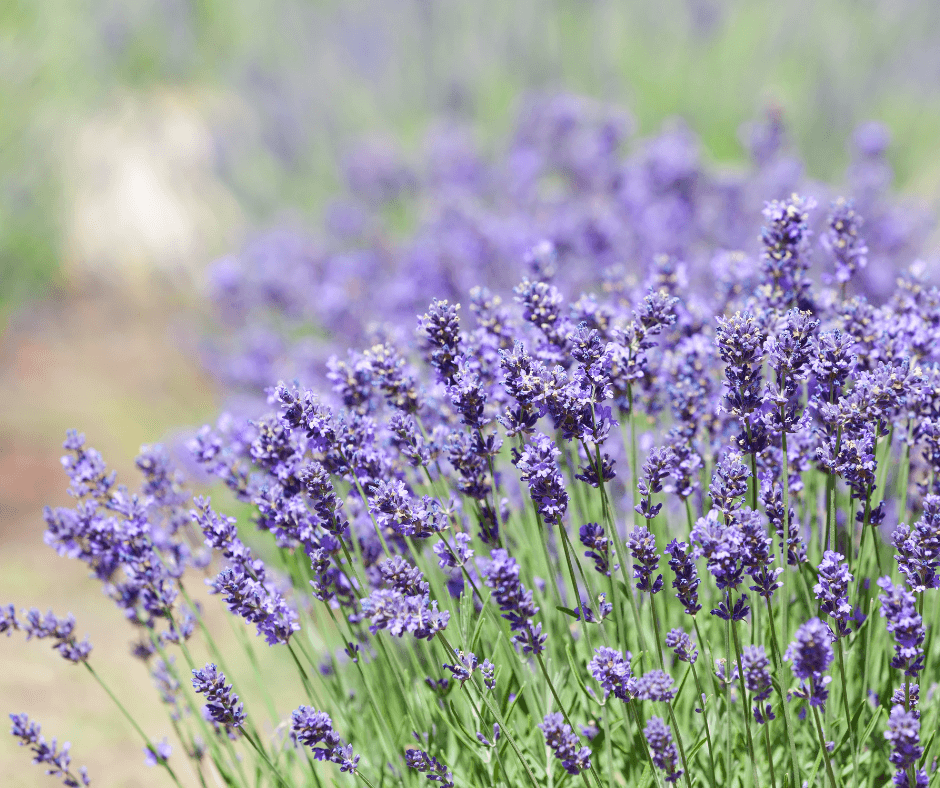
Few herbs are as strongly identified with fragrance and color as lavender (Lavandula spp.). There are many beautiful species and varieties to try, including the classic, compact ‘Munstead’ English lavender (Lavandula angustifolia ‘Munstead’), and lovely ‘Lady’ lavender (Lavandula ‘Lady’), which blooms in the first year from seed. ‘Vera‘ (Lavandula angustifolia ‘Vera’) is another compact form known for its strong, aromatic fragrance and dense wands of lavender-blue flowers.
Lavender is a short-lived shrubby perennial, which varies in hardiness depending on the species. English lavender (Lavandula angustifolia), the hardiest form, will survive in Zone 5 or 6. All grow best when given full sun and soil with good drainage. Like rosemary, they do not appreciate wet feet in the winter. With good care, plants will survive for four to five years before they begin to decline and require replacement.
Growing Summer Herbs
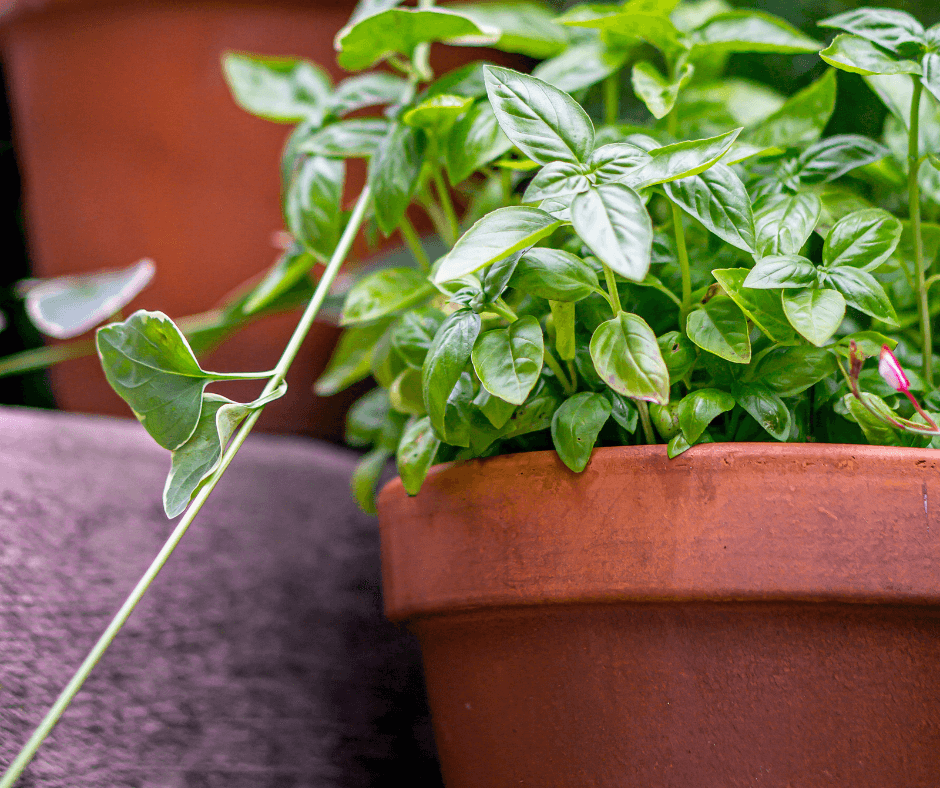
All of the herbs listed need warm temperatures, and a rule of thumb should planted outdoors after the threat of frost has passed. A full-sun location is required. For plants in containers, all will thrive in Black Gold Natural & Organic Potting Mix. The addition of perlite and pumice to increase drainage is recommended. Add three parts mix to one part pumice/Black Gold Perlite, and make sure the container is large and has drainage holes at the base.
There are so many different herbs that are readily available to the home gardener. If you have a favorite, check out the herb section at your local garden center for the best plants in your area. While many may not be winter hardy, they can provide great satisfaction during the summer months.



